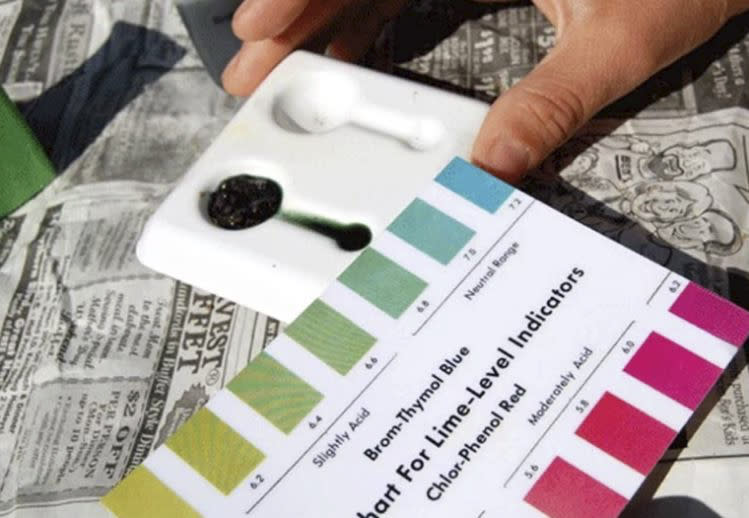Fall's the time to renovate your lawn. Here's how
If you’re growing cool-season grasses, like Kentucky or Canada bluegrass, ryegrass, or tall or fine fescues, and your lawn has been thinning, patchy or discolored, now is the time to do something about it.
Those hardy turfgrasses, commonly used in Canada and the northern two-thirds of the continental United States, typically enter dormancy and turn brown at the height of summer. They germinate, grow and develop roots best in the cooling temperatures of late summer into early fall. (Warm-season grasses, like Zoysia, St. Augustine, centipede, Bahia and Bermuda, are best renovated in spring).
Turf grasses in general are resource hogs, requiring a constant supply of water, fertilizers and, often, chemical herbicides to retain their emerald-carpet appearance. I recommend shrinking the lawn and replacing at least part of it with native plants to reduce your garden’s reliance on such amendments and to support beneficial insects and the ecosystem.
But I also understand that retaining a small lawn has a certain appeal: It can keep things looking tidy, define flower beds and keep the neighbors (or your HOA) happy.
Starting from the ground up
A healthy lawn, regardless of its size, will require less maintenance than one that is struggling. And the best way to achieve optimal lawn health is to build it properly, um, from the ground up.
Testing your soil’s pH is an important first step in the process. Grass requires a reading of between 6.0 and 7.5 to thrive. Sure, it will grow outside that range, but it will also become malnourished and more susceptible to weeds and diseases. That could lead to unhappiness, avoidable expenses and the use of chemicals.
If you’re going to go through the trouble of renovating your lawn, don’t skip the important first step of optimizing its pH. Doing so will lay a solid foundation for success, and your lawn will require less care later.
If the soil’s pH is 6.0 or lower, apply lime to raise it. If the pH is higher than 7.5, use ammonium sulfate or ammonium nitrate to lower it. Apply these amendments only at the rates recommended on the package labels and incorporate them 4-6 inches deep.
While we’re on the subject, it’s important to note that lime is often applied willy-nilly as a matter of routine – both by homeowners and landscapers. That should never be done without first conducting a pH test to ensure it’s indicated. Applying lime to a lawn that doesn’t need it risks raising the pH to levels that would inhibit its ability to absorb nutrients, including fertilizers.
Adding oxygen and compost
Next up is core aeration, a mechanical process that opens avenues in the soil through which oxygen (and water) can enter. Oxygen improves soil health, which in turn benefits roots, and healthy roots are necessary to support that lush lawn you’re after.
Core aerators are easy to use and widely available for rent at garden centers. The machines use hollow, 3/4-inch-diameter tines to pull 3-inch-long plugs out of the soil (just leave the plugs to decompose on the grass; they’ll break down quickly). If you’re not up for the task, you can hire a landscaper to do it. It’s not an expensive service.
Next, enrich the soil by spreading one-half inch of compost over the entire area (no worries if some falls into the aeration holes).
Select the right seed for your site
Tall fescue is the most heat- and drought-tolerant of any of the cool-season grasses, so it’s ideal for dry sites in full sun. Fine fescue is preferred for dry shade, but doesn’t hold up well in high-traffic areas. Kentucky bluegrass does well in humid areas. Combining two or more types is often a good strategy, but check with your local cooperative extension for recommendations tailored to your specific growing conditions.
Using a spreader, apply seeds in two directions to ensure complete coverage.
Watering and mowing
Give the area a good, deep soaking just this once, then sprinkle lightly twice a day until new growth reaches 2 inches high. Don’t allow the seed to dry out even once, or you may have to reseed (this is not the time to take a vacation, not even for a weekend).
Begin mowing when grass is 4 inches high, and leave clippings on the lawn as a free source of nitrogen.
Next spring, start mowing when newly emerged grass reaches 4 inches tall, never removing more than one-third of its height in a single session. Continue to leave clippings on the lawn and, if you do fertilize, opt for a slow-release product.
___
Jessica Damiano writes weekly gardening columns for the AP and publishes the award-winning Weekly Dirt Newsletter. You can sign up here for weekly gardening tips and advice.
___
For more AP gardening stories, go to https://apnews.com/hub/gardening.




